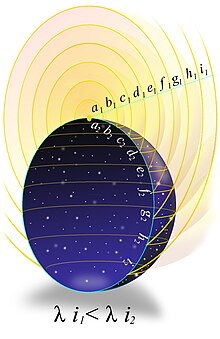Draft:Space Fata Morgana
| Submission declined on 13 April 2024 by KylieTastic (talk). This draft's references do not show that the subject qualifies for a Wikipedia article. In summary, the draft needs multiple published sources that are:
Where to get help
How to improve a draft
You can also browse Wikipedia:Featured articles and Wikipedia:Good articles to find examples of Wikipedia's best writing on topics similar to your proposed article. Improving your odds of a speedy review To improve your odds of a faster review, tag your draft with relevant WikiProject tags using the button below. This will let reviewers know a new draft has been submitted in their area of interest. For instance, if you wrote about a female astronomer, you would want to add the Biography, Astronomy, and Women scientists tags. Editor resources
|  |
| Submission declined on 13 April 2024 by Chaotic Enby (talk). This draft's references do not show that the subject qualifies for a Wikipedia article. In summary, the draft needs multiple published sources that are:
|  |
 Comment: no secondary sourcing Chaotıċ Enby (talk · contribs) 00:28, 13 April 2024 (UTC)
Comment: no secondary sourcing Chaotıċ Enby (talk · contribs) 00:28, 13 April 2024 (UTC)
Space Fata Morgana is a new hypothesis proposed by P.R. Doorn in his book 'Space Fata Morgana'[1] in 2024.
The hypothesis aims to provide an alternative explanation for the cosmic redshift observed in light originating from distant galaxies. The current consensus is that this is caused by the Doppler effect resulting from the velocity at which the galaxy is moving away from us.
Doorn's hypothesis suggests that point sources such as stars do not emit radiation in the form of a 3-dimensional sphere, but rather in the shape of a 4-dimensional sphere, or 4-sphere. When these 4-dimensional wavelengths are then measured in a 3-dimensional setup, due to the vast distance to the source and the 4-dimensional curvature of the universe, the wave will always be measured at an angle, causing it to appear stretched and even more so as the distance to the source increases. Therefore, even if the source is stationary, increasing redshift will be measured as the distance grows.
In his book he uses a flat 2-dimensional universe, as an analogy, to explain Space Fata Morgana. This flat universe is curved into a third dimension, making it look like a giant 'soap bubble' with flat galaxies on the surface. The stars in this universe emit their light not in a 2-dimensional shape, but in a 3-dimensional shape. When the wavelength of a stationary source at the 'top' of this universe is measured at the 'bottom' of this universe, the waves will be stretched. And this redshift increases with distance.

Since distance, not velocity, determines the degree of redshift in this scenario, it means that stretched wavelengths should be measurable in every direction of the universe, explaining cosmic background radiation. As the wavelength of visible light is also stretched, the universe appears black in color. Additionally, with this hypothesis, there is no longer any reason to assume that the universe is expanding.
References[edit]
- ^ Doorn, Patrick (2024-04-12). Space Fata Morgana (1st ed.). United States: SPC. ISBN 979-8321815014.
{{cite book}}: CS1 maint: date and year (link)
